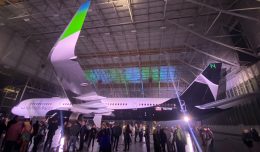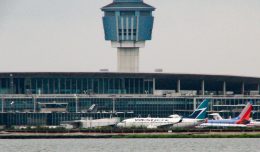A snippity exchange between the crew of an American Airlines 767 and the Kennedy Airport control tower on Wednesday concluded when the plane made an emergency landing.
On May 5th, American Airlines Flight 2 from LAX was cleared to land on JFK‘s Runway 22L when the tower offered a wind update: “Wind now 3-2-0 at 2-3, gusting to 3-5.”
A few seconds later, one of the pilots responds, “American 2, we can’t land on 2-2. We’re breaking off approach, and if you don’t give us to, uhh, runway, uhh, 3-1-Right we’re going to declare an emergency.”
Tower: “Alright I will pass it along, fly runway heading for now.”
AA 2 heavy: “Okay, we’re declaring emergency, we’re gonna land 3-1-right. We’re going to the left and then coming around.”
Tower: “American 2 heavy, just fly runway heading.”
AA 2 heavy: “Clear the area.”
Tower: “You say you’re declaring emergency?”
AA 2 heavy: “Three times I’ve told you that. Three times we’re declaring an emergency.”
Tower: “Okay, I just want to verify, I know you said if you didn’t get 31-right you have to declare an emergency. Okay, understand, fly runway heading and I gotta get you a turn!”
Tower: “Fly heading 1-8-0”
AA 2 heavy: “American 2 heavy, we are turning around to the left here and landing on 3-1. Remove everybody from our way. We’ve declared an emergency. We’re on a visual.”
Tower: “Alright, American 2 heavy, cleared to land, 3-1-right, 3-1-0 2-4 gusting to 3-4.”
AA 2 heavy: “Cleared to land, runway 3-1-right, American 2 heavy.”
Reportedly beyond the crosswind limits of the 767-200 and too low on fuel to perform a new approach, the crew of the jet may have had no choice but to land immediately. JFK has been using its 4/22 runways during crosswind conditions more frequently since the March closure of runway 13R/31L for construction.
No word if the FAA or American Airlines is investigating the incident.
Audio clip thanks to our good friends at LiveATC.net.







